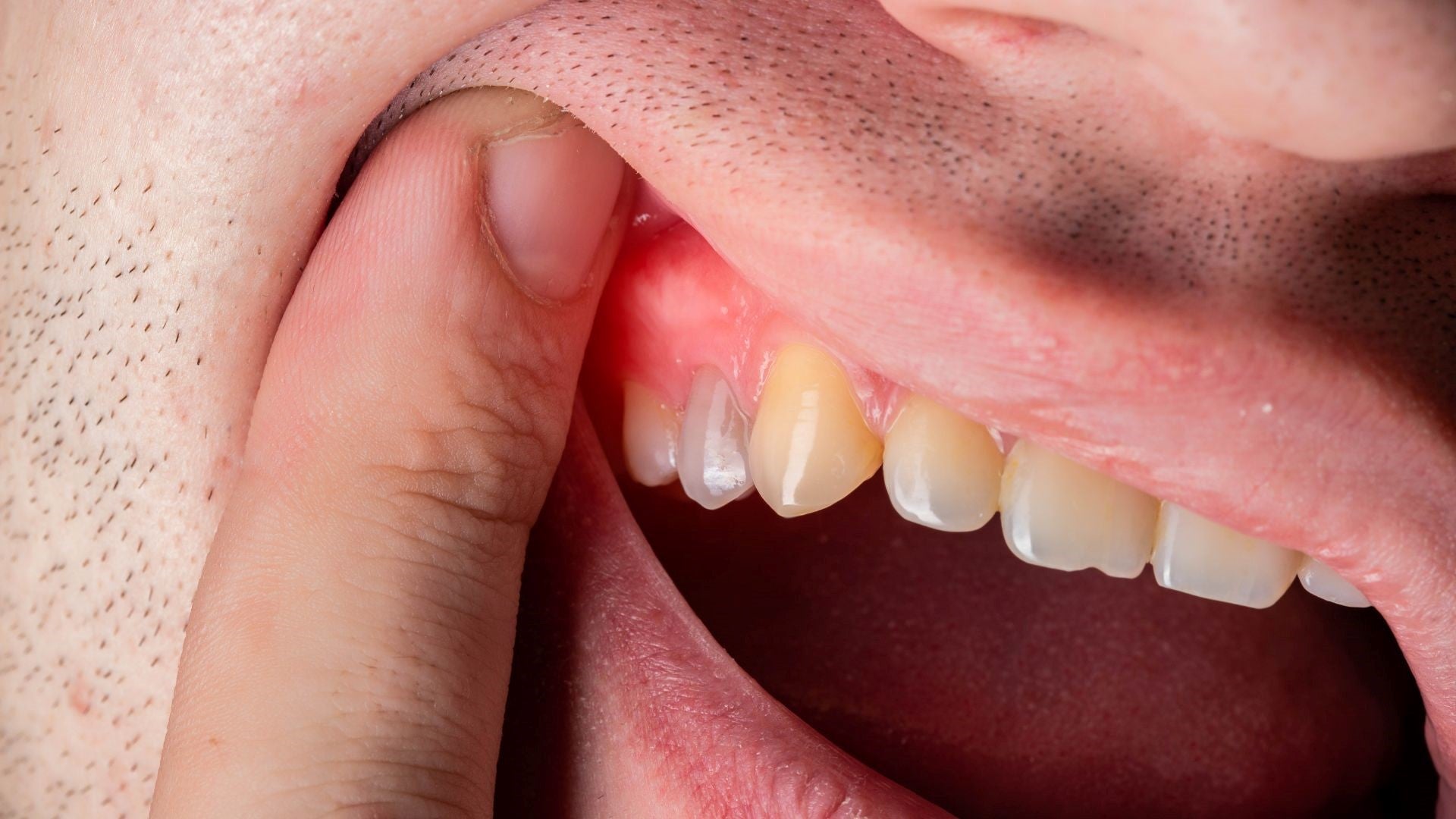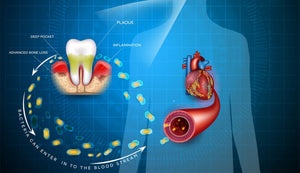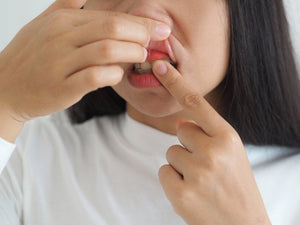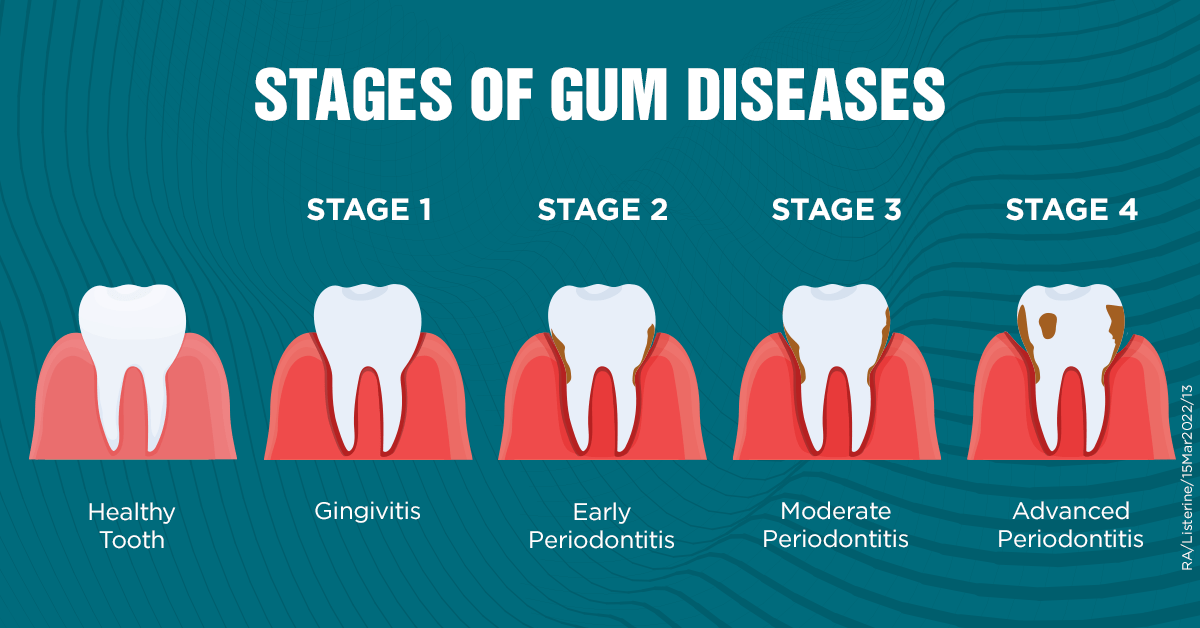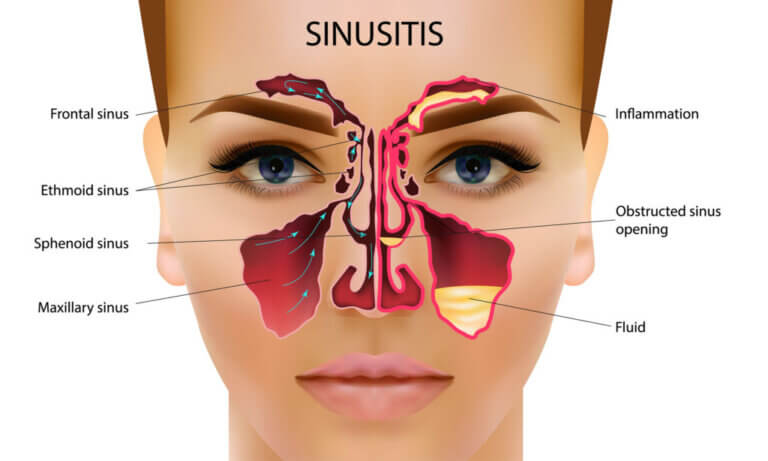If you’ve ever run your tongue along your teeth and suddenly felt puffiness, soreness, or a strange tenderness around one tooth, you’re not alone. Gum swelling is a problem many people shrug off at first, thinking it’ll go away on its own. But when that uncomfortable pressure lingers, or worse, starts hurting every time you chew, the thought creeps in: what causes gum to swell around the tooth?
The truth is gum swelling isn’t random; it’s your body sounding an alarm. Something is irritating or infecting the soft tissue around your teeth, and ignoring it only lets things get worse. Statistics tell us that nearly 46% of adults over 30 in the United States show signs of gum disease, and gum swelling is often the very first red flag.
What are the reasons and causes of swollen gums? Let us find out! We will evaluate the risk factors, symptomology and of course, enlighten on both medical and natural means of treatment. And on top of that, we will also present you with an effective natural product - The Goodbye Company Gum Disease solution, that is working miracles in promoting gum health without being abrasive with chemicals. At the end, you will understand fully what is happening in your mouth and the next step to take.
Gum Swelling Around Teeth: Here’s
Before we get into the why, let’s clear up what happens when gums swell. Your gums, or, as they are also known, gingiva - consists of soft tissue that cushions and supports your teeth. When they are in good shape, they enclose your teeth so bacteria have no chance. Gums appear puffy, redder than normal, and can be sore and sometimes even bleed when swollen.
The inflammation causes swelling. An inflammatory reaction is a normal part of your body because it tries to respond to something irritating, damaged or infected. Against teeth, this typically refers to an accumulation of bacteria, hardened plaque or whatever has caused the immune system to react. Although the inflammatory process is a defense mechanism, the clogging will also be experienced as a side effect, in the form of puffing, discomfort and in some cases some pains.
Here’s the important part: swelling around one tooth can signal anything from a minor issue like food stuck between teeth, to something more serious like periodontal disease. If you’re wondering what causes gum to swell around the tooth, the answer is layered. It could be bacterial, mechanical (like an ill-fitting dental crown), or systemic (like pregnancy hormones). That’s why digging into specific causes matters.
Reasons – What Causes Gum to Swell Around the Tooth
This is the heart of the discussion. Gum swelling has multiple triggers, and understanding them helps you know when to wait, when to act, and when to see a dentist.

Plaque and Tartar Buildup
Plaque is that sticky, colorless film that forms on your teeth after eating. It’s mostly bacteria feeding on starches and sugars. If not removed daily by brushing and flossing, plaque hardens into tartar (also called calculus). Once tartar forms, it traps bacteria like a fortress and irritates the gums. That irritation shows up as swelling.
Gingivitis
Gingivitis is the earliest stage of gum disease and one of the most common answers to what causes gum to swell around the tooth. The gums become red, swollen, and prone to bleeding. The good news? Gingivitis is reversible with proper oral care and professional cleaning.
Periodontitis
If gingivitis isn’t treated, it can advance into periodontitis. Here, the gums start pulling away from the teeth, creating pockets where infection thrives. The bone supporting your teeth can get damaged, leading to loose teeth or even tooth loss. Periodontitis is not only painful, it’s permanent if not treated.
Infections: Bacterial, Viral, and Fungal
Swelling can also come from infections beyond classic gum disease. Bacterial infections from abscesses, viral infections like herpes simplex, or even fungal infections like oral thrush can make gums swell painfully.
Tooth Abscess
An abscessed tooth occurs when germs enter the flesh of your tooth. This promotes pus, swelling and extreme pain which spreads towards the tooth gum. It is one of the most alarming dental emergencies and needs relief care.
Hormonal Changes
Pregnancy, menstruation, or hormonal contraceptives can make gums extra sensitive and prone to swelling. Dentists often call this “pregnancy gingivitis.”
Medication Side Effects
Certain medications reduce saliva or change gum tissue. For example, anti-seizure drugs like phenytoin and some blood pressure medications can cause gum swelling as a side effect.
Nutritional Deficiencies
Vitamin C deficiency (scurvy) weakens gum tissue, making it more likely to swell and bleed. Poor nutrition in general weakens oral defense systems, so gums suffer first.
Together, these reasons explain the layers behind what causes gum to swell around the tooth. It’s rarely “just one thing,” and often multiple factors overlap.
Risk Factors That Make Gum Swelling Worse
Anyone can develop gum swelling, but certain risk factors stack the odds against you. Poor oral care is the most obvious - skip brushing and flossing, and plaque builds up faster than you’d think. Smoking is another huge one. Tobacco cuts blood flow to gums, weakens immunity, and slows healing.
Older age, dry mouth, crooked teeth that are hard to clean or ill-fitting dental work are additional causes. Diseases such as HIV, leukemia, or even diabetes impair immunity and this provides bacteria an opportunity to flourish. Risk is also increased by hormonal changes in pregnancy, menstrual cycle, or use of birth control.
To make it clearer, here’s a breakdown:
|
Risk Factor |
Impact on Gum Health |
|
Smoking |
Reduces blood flow, slows healing |
|
Poor Oral Hygiene |
Increases plaque & tartar buildup |
|
Vitamin C Deficiency |
Weakens gums, increases swelling |
|
Hormonal Changes |
Makes gums more sensitive to irritation |
|
Chronic Illness (HIV, Cancer, Diabetes) |
Lowers immune defense |
|
Misaligned Teeth |
Creates hard-to-clean pockets for bacteria |
When people ask what causes gum to swell around the tooth, these risk factors often tip the balance from mild irritation to chronic swelling.
Symptoms You Should Never Ignore
Puffy gums appear to be harmless but in most cases they are not. Tender, red, or bleeding gums are already a red flag when you brush. Persistent bad breath, pus between teeth and gums or the feeling of loose teeth are the late stage symptoms and should not be ignored.
The initial symptoms are mild inflammation and puffiness of the gum, minimal bleeding and inflammation of the gum, as well as sensitivity to hot or cold foods. Dentists consider gum recession, gaps visible between the teeth, and an apparent difference in how your bite feels to be advanced symptoms.
The takeaway? If you’re trying to figure out what causes gum to swell around your tooth, don’t just look at the swelling. Look at the whole picture - pain, bleeding, smell, and changes in your bite.
Gum Swelling vs. Tooth Pain - Are They Connected?
Many people confuse gum swelling with tooth pain, assuming one always comes with the other. But the relationship is more nuanced than that. Gum swelling and tooth pain often overlap, but they don’t always mean the same thing is happening.

When Gum Swelling Happens Without Pain
It’s entirely possible to have swollen gums around a tooth without feeling any real pain. This typically happens in the early stages of gingivitis, where gums are inflamed due to plaque and tartar buildup. The swelling is visible - you might notice puffiness or bleeding when brushing, but because the infection hasn’t spread deeper, there isn’t much pain yet. This is the “silent phase” that often tricks people into ignoring it.
Hormonal changes, vitamin deficiencies, or even a rough piece of dental work (like an overhanging crown) can also cause swelling without immediate pain. That doesn’t mean the issue isn’t serious. If left unchecked, these mild signs can easily progress into something painful.
When Pain Follows Swelling
Pain usually shows up when swelling is left untreated. A tooth abscess, for instance, often begins with gum irritation. As bacteria move deeper into the tooth’s pulp, pressure builds up, causing throbbing pain. At this stage, gum swelling is accompanied by sharp or pulsating discomfort that can spread to the jaw or ear.
In other cases, periodontitis makes gums recede and exposes tooth roots. The result? Sensitivity to hot, cold, and sweet foods alongside swollen, tender gums. Here, the swelling is a symptom, but the pain is a warning that the problem has escalated.
The Connection in Everyday Cases
So, are gum swelling and tooth pain connected? Yes, but not always at the same time. Swelling is often the body’s first alert, while pain is a sign that infection or damage has gone deeper. This is why dentists emphasize not ignoring swollen gums even if they don’t hurt yet. The earlier you treat the swelling, the less likely you’ll end up with that unbearable toothache.
Conventional Treatments Dentists Recommend
When gums swell and home remedies aren’t enough, dentists step in with treatments designed to target the root cause. The type of treatment depends on how advanced the problem is, but the main goal is always the same: stop infection, reduce inflammation, and save your teeth.
Professional Cleaning (Scaling And Root Planing)
The first line of defense is a deep cleaning. Scaling removes plaque and tartar both above and below the gumline, while root planing smooths out the root surfaces of the teeth so bacteria can’t reattach easily. This procedure can feel a little uncomfortable, but it’s incredibly effective in reducing swelling and inflammation. For many patients, this alone can reverse early gum disease.
Medications and Rinses
In cases where infection has already taken hold, dentists may prescribe antibiotics - either in pill form, topical gels applied directly to the gums, or even slow-release antibacterial chips placed into gum pockets. Medicated mouth rinses are also common, helping control bacteria and reduce gum irritation between visits.
Surgical Options for Advanced Cases
If swelling has progressed into severe periodontitis, surgery may be the only way to control damage. Flap surgery allows dentists to lift the gums back, clean out deep tartar deposits, and then reposition the gum tissue for a tighter seal. In cases where the bone is damaged, bone grafting or guided tissue regeneration may be recommended to encourage regrowth.
Why Acting Early Matters
The key takeaway is that conventional treatments are most effective when started early. Gingivitis can be reversed with professional cleaning and better at-home care, but once the condition progresses to periodontitis, treatment becomes more invasive. Pain, swelling, and loose teeth are all signs that waiting too long can cost more than just money, you may end up losing teeth permanently.
Natural And Preventive Remedies
While dentists handle severe cases, home care matters just as much. Saltwater rinses reduce bacteria and soothe inflammation. A diet rich in Vitamin C and antioxidants strengthens gum tissue. Neem, clove, and tea tree oil have long histories in traditional medicine for fighting bacteria and reducing swelling.
Daily habits such as brushing twice, flossing once, and staying hydrated, do more than you think. In fact, consistent oral hygiene is the number one way to prevent gingivitis.
Introducing The Goodbye Company Gum Disease Oral Solution
Now let’s talk about a natural solution worth highlighting. Many people today are wary of harsh mouthwashes and chemicals. That’s where The Goodbye Company Gum Disease stands out.
This product is infused with Omega 3 and 9 oils, neem oil, and clove essential oil - a powerful combination that not only prevents gum disease but helps reverse early gingivitis. Neem and clove are known for their antibacterial and anti-inflammatory properties, while Omega oils help reduce tissue inflammation and promote healing.
If you currently suffer from poor oral health such as bleeding gums, tooth pain, or sensitivity to hot and cold, try the Goodbye Company Gum Disease into your daily oral care routine. It’s not just preventative; it actively supports gum repair. Simply put, it’s the best natural gum disease cure for anyone who prefers a holistic approach.
Prevention Tips For Long-Term Gum Health
Prevention is easier than cure. Brush at least twice a day using fluoride toothpaste. Floss daily - yes, every day. Avoid sugary snacks and drinks that feed bacteria. If you smoke, quitting is the single best thing you can do for your gums.
Regular dental visits (every six months) catch problems before they spiral. Staying hydrated, eating fresh fruits and vegetables, and boosting your Vitamin C intake also make gums stronger.
Remember, the simplest way to avoid asking what causes gum to swell around the teeth is to adopt habits that keep gums healthy from the start.
When to See a Dentist Immediately?
Not all gum swelling is urgent, but some signs demand immediate care. If you notice pus, severe pain, swelling that spreads to your jaw or face, or loose teeth, don’t wait. These can signal abscesses or advanced gum disease, both of which need professional treatment right away.
Swelling that lasts more than a week without improvement also deserves attention. Gum issues rarely fix themselves - they usually get worse.
FAQs - What Causes Gum to Swell Around the Teeth
What causes gum to swell around the tooth the most often?
The most common cause is plaque and tartar buildup leading to gingivitis.
Can gum swelling go away on its own?
Mild cases may reduce with better oral hygiene, but persistent swelling requires dental evaluation.
How do I know if my swollen gum is serious?
Look for pain, pus, loose teeth, or swelling that spreads. These need urgent care.
Is gum swelling always a sign of gum disease?
Not always - food particles, injuries, or hormonal changes can also trigger swelling.
What home remedies reduce gum swelling fast?
Salt water rinses, cold compresses, and natural oils like clove can help.
How can I prevent gum swelling permanently?
Consistent oral care, healthy diet, and natural products like The Goodbye Company Gum Disease keep gums strong long-term.
Outlook
There are many answers to what causes gum to swell around the tooth. The key is not to ignore it.
Gum swelling is more than just a nuisance; it’s often the first sign that your oral health needs attention. The plaque and tartar buildup to infections and hormonal changes is a quick and devastating process - and shouldn’t be ignored!
By combining professional care, consistent hygiene, and natural solutions like The Goodbye Company Gum Disease oral solution, you can keep your gums healthy, strong, and pain-free.


